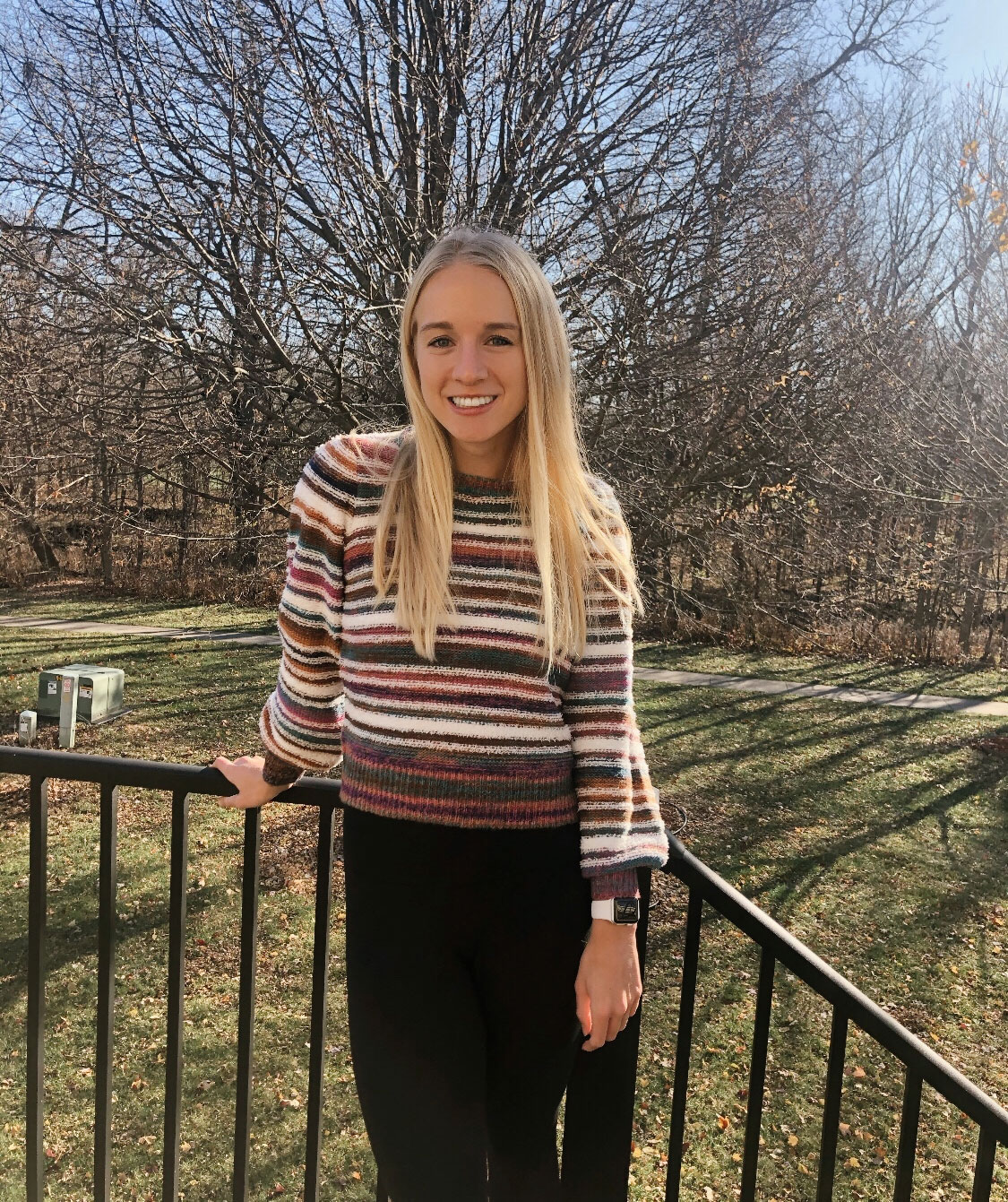Sarah Dougherty earns top Step 1 score and scholarship
 Sarah Dougherty says she “wasn’t feeling amazing” as she came out of the eight-hour exam that could determine which residency training program she gets into.
Sarah Dougherty says she “wasn’t feeling amazing” as she came out of the eight-hour exam that could determine which residency training program she gets into.
After weeks of preparing for Step 1 of the United States Medical Licensing Examination (USMLE), it turned out to be just as difficult as her peers had warned it would be.
But in reality, she earned the highest score among the 147 medical school classmates in the University of Iowa Carver College of Medicine. Her score of 267 (out of possible 300) earned Dougherty a $3,000 scholarship award from the college that will be applied toward medical tuition and fees.
The USMLE Step 1 is the first test in the three-exam process for medical licensure in the United States. Step 1 measures how well students can apply basic and foundational scientific concepts to clinical scenarios. The exam is divided into seven 60-minute blocks and administered in one eight-hour session. The number of randomized, multiple-choice questions per block may vary, but does not exceed 40; the total number of questions for Step 1 does not exceed 280.
It’s one of the toughest, and one of the most important, exams medical students must pass.
MD students in the UI Carver College of Medicine take the USMLE Step 1 after completing their core clinical clerkships, which is typically midway through their third year.
Dougherty recently reflected on her Step 1 success:
How did you prepare for the USMLE Step 1? Did you have a strategy?
I talked to other people in the year above me to see what they did. I was in a tutor group with my friends prior to the dedicated study time. I also did something called Sketchy Micro, which is a video course that goes over the microbiology information you need to know.
And then everyone gets six to seven weeks of dedicated study time. That was exhausting. Thankfully, one of my roommates is in medical school with me, and we studied together. So at least I wasn’t in it alone. But it was long days of studying.
How did you structure your prep days?
We had a calendar to lay out what needed to get done, so we would know what was on the agenda for each day. Usually, it included reading a chapter or half a chapter, depending on how long the text was, in the morning, then lunch. And then in the afternoon we would answer 80 UWorld questions [a large question bank used to study for the Step 1]. Then we would work out, eat dinner, and at night we would do flash cards and watch a TV show before bed. And then repeat the next day.
What advice would you give other medical students preparing for the Step 1?
Find what works for you and then stick to it. If you’re bouncing between a bunch of different resources or ways of studying, you’ll just end up not getting what you need done. But if you pick a couple things to do and do it well, that’s probably the best strategy.
What specialty most interests you for residency training?
I’m interested in internal medicine. I really like that you get to see something different with each patient and every patient you see is complex, so you’re managing multiple medical conditions. I also like that internists seem to value understanding the underlying pathophysiology of diseases. You’re constantly learning more and figuring out how best to treat a patient.
How does the residency interview process look like during the COVID-19 pandemic?
Usually, you travel for your interviews, and you spend the night there and check out the facilities. This year, it’s all over Zoom. Most programs are trying to replicate a tour—you still meet with the residents, but it’s definitely not the same.